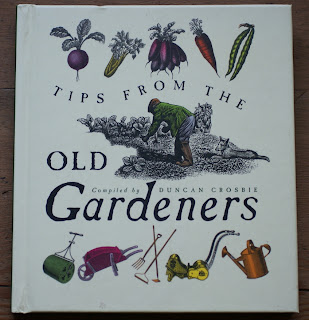We have an allotment plot ! okay half an allotment plot, but either way it's extra veg and fruit growing room, good stuff.
Here's a picture of the plot -
Here's a picture of the plot -
 |
| A little over run, lots of brambles. |
We weren't sure if we were going to take the plot to begin with, for a start it needs a fair bit of work just to get it to a usable state, although as it turns out things have moved quicker and with a bit of luck we should be ready for planting some things in the next day or so.
The biggest problem was the brambles, they are every where, these I think will be the main issue we have, keeping them in check will be fun, although we have decided to allow the ones next to the fences to grow, all be it in a controlled way, might as well make use of the black berries they'll produce :-)
I have been on the plot today to do some clearing, and after four hours I've managed to clear it quite well, it still needs to be dug over, and the roots of as many of the weeds removed as possible, but the soil is pretty easy to turn, so fingers crossed it won't take too long.
Here's what it looks like now -
 |
| Things are a little clearer now :-) |
There's still a little chopping to do, mainly at the top of the plot, I discovered a load of raspberry plants (handy) there are maybe as many as twenty, not sure until I clear more of the weeds. We also found that there were some vine type things growing up some of the fences, it turns out these are hop vines, so we have kept them as well, useful things hops, and not just for making beer.
We had thought it might take some time to chop back all the weeds, and we had considered hiring out a petrol strimmer, but in the end I made a tool that worked just as well, although it does require a little more effort.
Here it is -
 |
| The bramble basher :-) |
Okay so it does kind of look like a sword, but it was my take on the weed slashers you can buy. It's made of a piece of 5mm thick steel, which has been lying about in my shed waiting to be used, the handle is just an off cut from some building project or other.
The way it works is kind of obvious, it has a sharp edge and you swing it, kind of like a machete, and as some of the brambles had stems an inch or more thick I figured something with a little beef was needed. The blade is heavy, but in a way that lets you swing it and the weight of the blade does the rest, so it requires minimal effort for maximum effect, which when you have 120 square metres to clear is a good thing, I did also use a set of garden shears for cutting round the plants we want to keep.
I guess the hardest part of making this tool was getting a half decent edge on the thing, the steel I used isn't really meant for this kind of thing, but it worked.
The edge -
 |
| It is quite sharp. |
To get the cutting edge onto the blade I used my bench grinder to start it off, and get the angle of each side right, then I used a metal file to make it nice and sharp, then I finished it off with a sharpening stone, I did have to sharpen the blade a couple of times during use, but all in all it saved time and money, so I'm happy.
To make the handle all I did was cut the wood down the middle, then using a rasp file I made the slit a little bigger, then pushed it onto the metal blade, then using a drill and a hss (high speed steel) drill bit I drilled through the wood and then through the metal, taking care not to go too far into the other side, then I used normal wood screws to clamp the handle onto the blade, I used two screws on each side of the handle.
I used a small plane and sand paper to make the handle round and smooth, then sealed any holes, gaps with glue.
The handle -
 |
| Not the best piece of wood working ever. |
And that's about it, one weed whacker :-) it cost pennies, a piece of steel like the one I used is around £5, or you could use any flat piece of steel you can find.
I admit it is perhaps over kill, but I wanted to clear the weeds, and get it done quickly.
I fully expect the other plot holders to assign me the nick name of shogun :-)
Thanks for reading (this may not be the last allotment related post ;-)






























